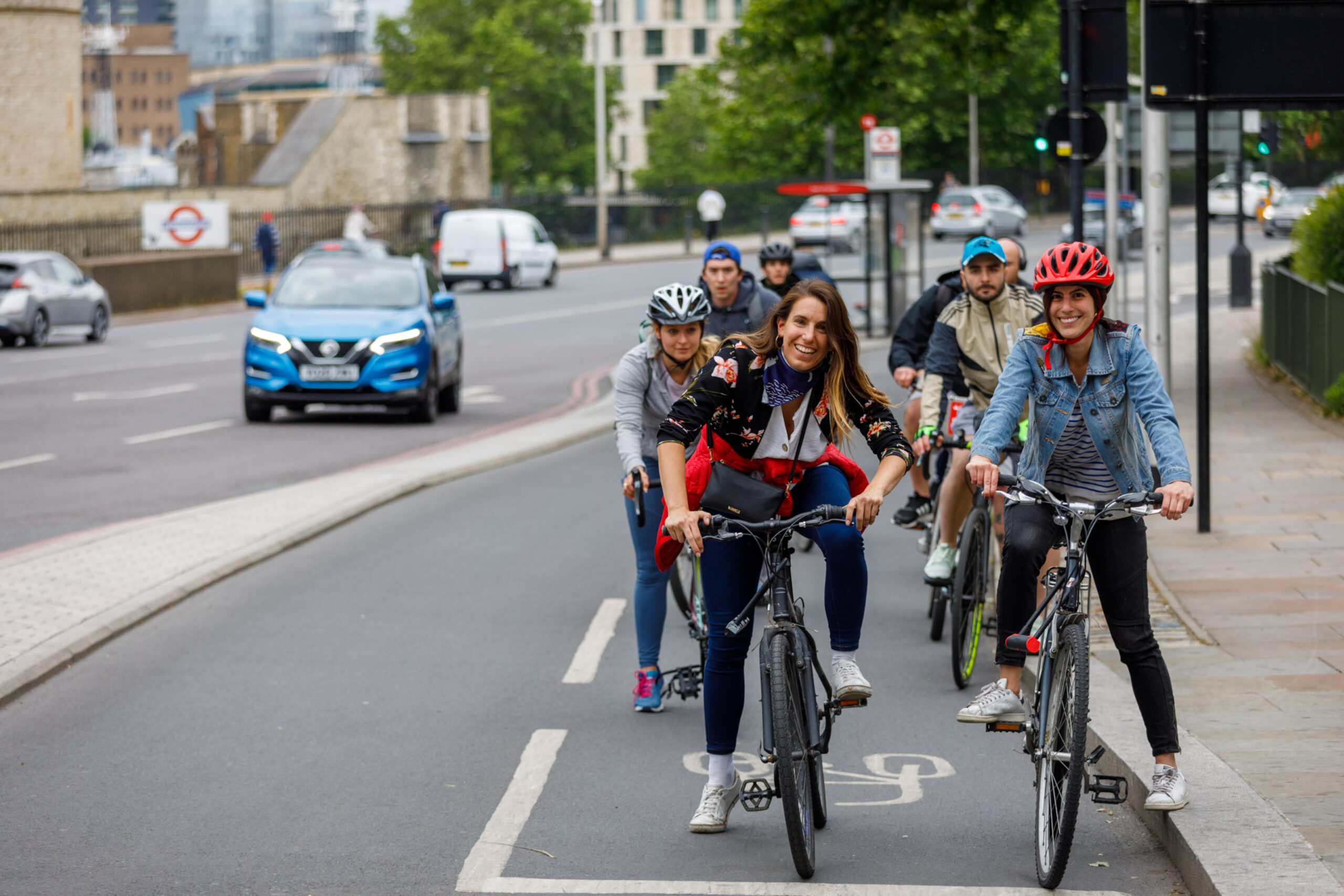
The UK is in the middle of a cycling boom. The number of riders has increased by around 70% since March, and bike sales have soared. And with public transport off-limits to most people, many towns and cities are making their streets better for walking and biking.
But despite all the recent progress, city cycling can still feel intimidating at first. If you’re new to city cycling (or just rusty), it’s good to understand the basics, so you can start riding with confidence.
So, let’s run through some common questions from city cycling beginners.
What’s the best bike for commuting and everyday cycling?

For most people starting out with everyday city cycling, having a bike that’s comfortable and practical is more important than speed or off-road capability.
If that sounds like you, a hybrid or a dutch-style model is probably the way to go. But don’t be afraid to test-ride a few different types of bike. The one that works best might not be the one you’d expect.
What size bike should I get?
Whatever you go for, make sure you get the right size. A well-fitted bike will be much more comfortable and fun to ride. Ask your bike shop for help, or use this guide to find your size.
What are the different kinds of bike?
Dutch bikes

Dutch bikes are all about comfort. The step-through frame shape makes it easy to get on and off. And they normally come with chain guards, mudguards, a comfy saddle and other practical touches as standard.
Hybrid bikes
Hybrid bikes (sometimes called ‘city’ or ‘urban’ bikes) tend to be a bit faster and lighter, but that comes with some comfort tradeoffs. For example, they might have narrower tyres, which are quicker, but aren’t as good at absorbing bumps in the road.
Specialist bikes for disabled people

There’s an amazing range of specialist bikes for disabled people or those with different mobility needs. Wheels for Wellbeing offer loads of help and advice for anyone who wants to cycle, regardless of ability.
Electric bikes
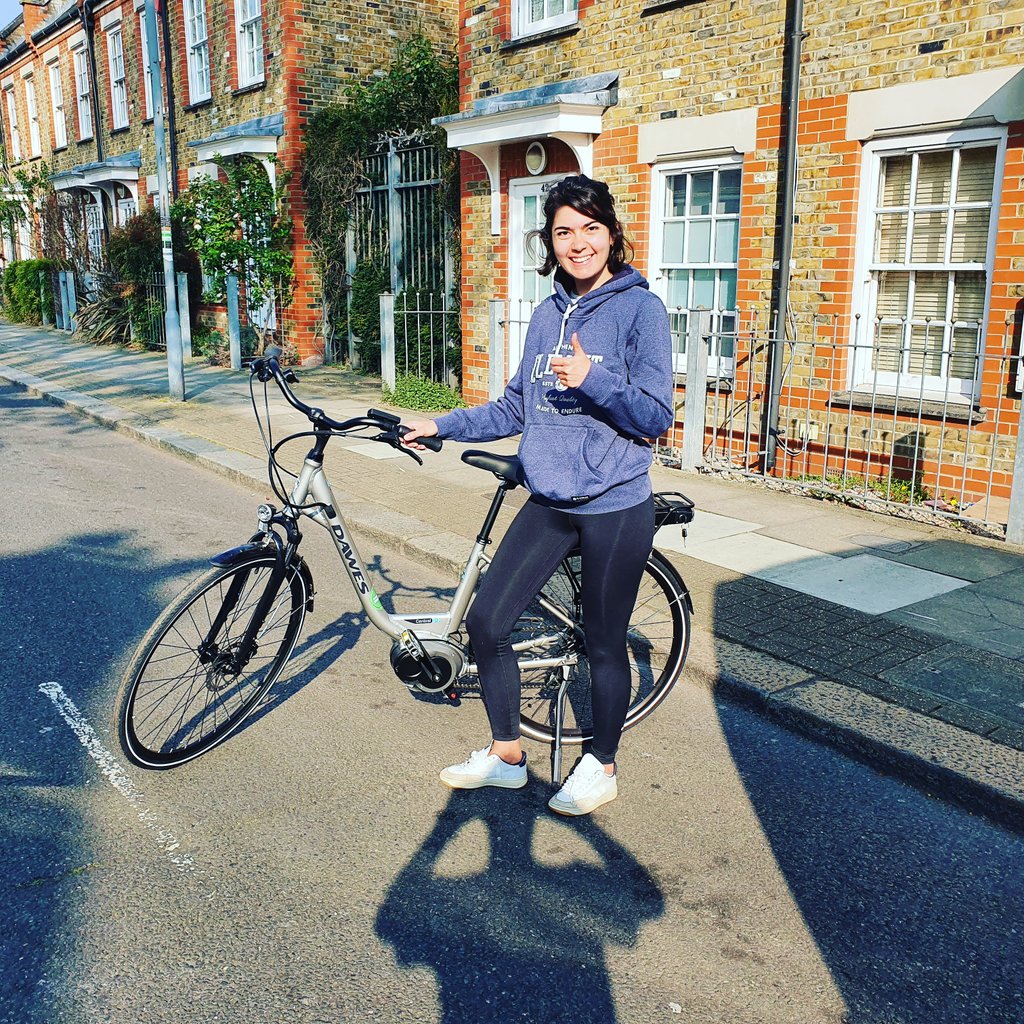
More and more bikes these days come with an electric motor, that massively reduces the effort you need to put into pedalling. Electric bikes don’t come cheap, but if you have mobility issues or live in a hilly area they can be a game-changer.
Folding bikes
If you don’t have space to store a full-size bike, or you want to be able to split your journey (eg catch a train then ride from the station), a folding bike might be for you. If you’re used to regular bikes, the smaller wheels used on folding bikes make them feel strange to ride at first. But for short trips, it’s hard to rival them for convenience. Brompton have a national hire scheme for their (excellent) folding bikes, so it’s easy to test one out if you’re curious.
Road bikes and mountain bikes

If you’re more athletic and want more speed, try a road bike. Or if you want to be able to ride off-road, a mountain bike might be the way to go. Just bear in mind that both of these bike types are designed for a specialist purpose, so they won’t be ideal for everyday city trips.
Cargo bikes

If you want to be able to carry bigger loads – including multiple children – consider a cargo bike. With one of these (especially with an electric motor), most people could cut out the vast majority of their urban car journeys.
How much does a good bike cost?
The difference in price between bikes is usually down to the material used in the frame, and the quality of the brakes and gears.
Second-hand bikes are really affordable, and if you get one from a good bike shop they’ll usually guarantee that it’s in good shape. This video explains what to look for when you’re choosing a second-hand bike.
New bikes are pricier (and worse for the environment), but it’s easier to find what you want and be confident in what you’re getting. If you buy new, expect to pay at least £400 for a good-quality bike.
The range of different features on modern bikes can be overwhelming, but some matter more than others. Here’s a useful guide on the important things to look for when you’re buying a new or used bike.
Make sure you also budget for a lock, lights, and a helmet if you decide to wear one.
What is the cycle to work scheme, and can I get it?
If you’re in a salaried job, you might be able to get your bike tax-free and spread the cost using the cycle to work scheme. Ask your employer if they’re taking part, or learn more about the scheme here.
What cycling accessories do I need?
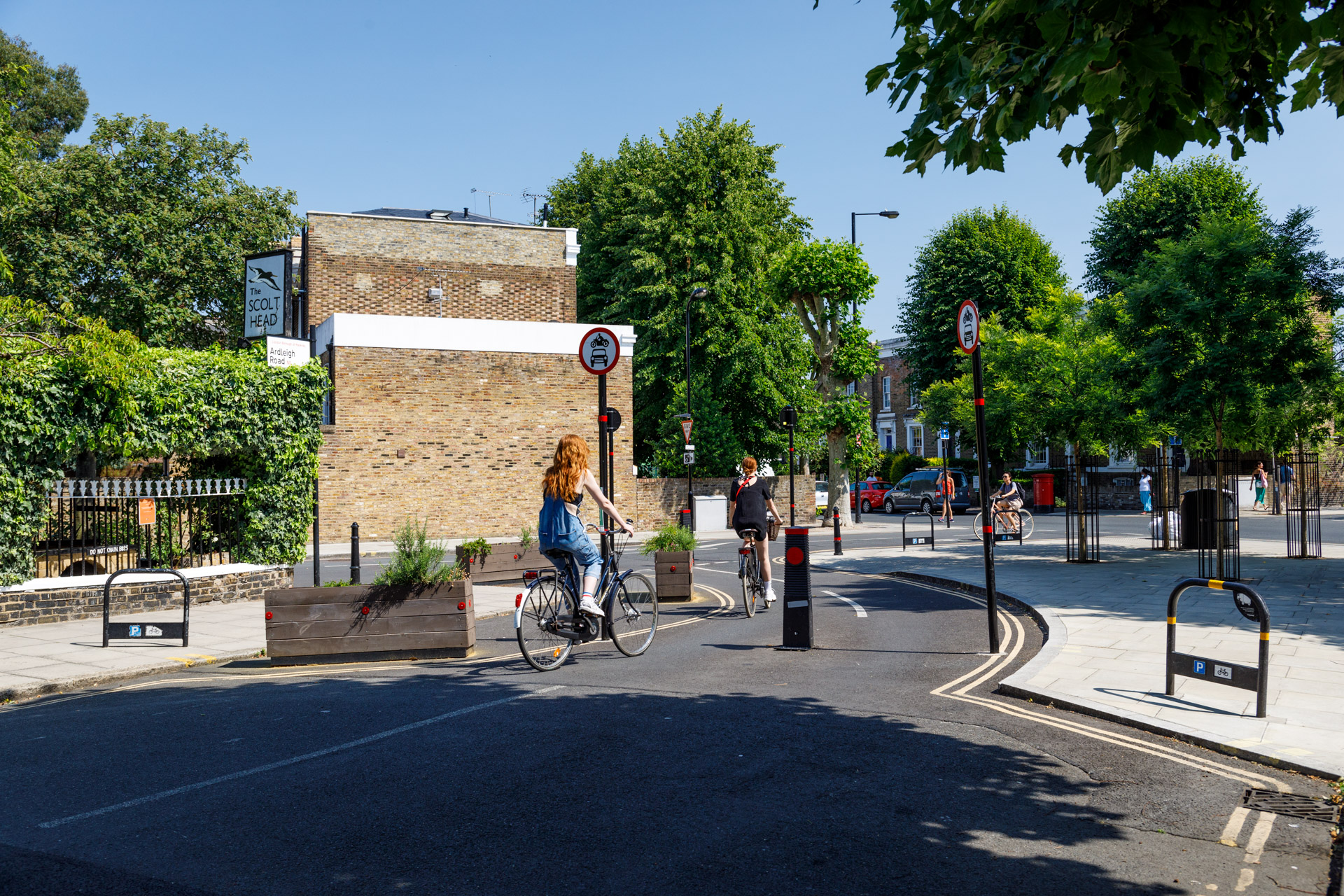
Lights
Bike lights don’t need to be fancy – they just need to be bright and easy to charge. USB chargeable lights are more convenient for most people, but basically anything stocked in your local bike shop will do the trick.
A good lock
Bike locks use a bronze/silver/gold safety rating system. This tells you how easily a thief could break through the lock. Gold-rated locks tend to be heavier and more expensive, but also more secure. Depending on where you live and the value of your bike, your insurance might not pay out unless you’re using a high-rated lock. Gold-rated locks start from about £40. Longer locks are less portable, but will give you more options for where to park.
I use an Abus folding lock because it’s compact, flexible and doesn’t rattle around when I’m riding with it attached to my bike.
Mudguards
If your bike doesn’t come with mudguards, make sure you get some before winter arrives. As a general rule, the more of your wheel they cover, the better a job they’ll do keeping you dry. Any full-size fixed mudguards will work fine, but check with the shop that they’ll fit your bike. Better still, get the shop to fit them for you, to reduce the chance of annoying rattles.
A phone mount
Unless you’re only planning to ride on familiar routes, it’s worth getting a handlebar mount for your phone, so you can use it like the satnav in a car. This means you won’t have to keep stopping to check your route, saving time and making the journey smoother.
I use the quad-lock phone case, which clicks straight onto your handlebars.
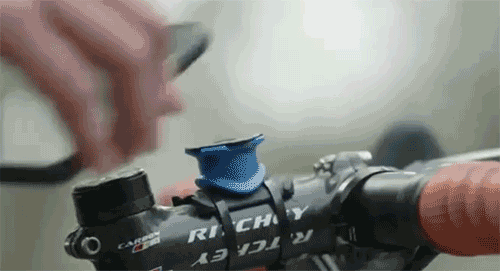
A bag
There are loads of ways to carry stuff on a bike – from baskets and panniers to special trailers you tow behind you. But unless you’re planning to carry heavy loads, a normal backpack will work fine.
Should I wear a helmet?
It’s up to you. Helmets make some people feel safer, and do offer valuable protection for certain kinds of collisions or falls. Here’s a good summary of the evidence on cycle helmet safety, if you’d like to read up.
If you do opt for a helmet, make sure it’s properly fitted or it won’t work. Note that many bike helmets are designed for oval-shaped heads. If standard helmets feel uncomfortable, it’s worth trying a helmet that’s designed for rounder heads. If you have afro-textured hair, go for a helmet that’s easily adjustable to accommodate different styles, and use these tips to keep your hair happy under a helmet.
Where can I get basic cycling lessons?
If you’ve never ridden a bike before, or if you need a refresher on the basics, your local council is a good place to start. Many provide free or subsidised training sessions for adults and children. Search ‘council cycle training’ plus the name of your council to find what they have to offer.
How to plan a safe cycle route
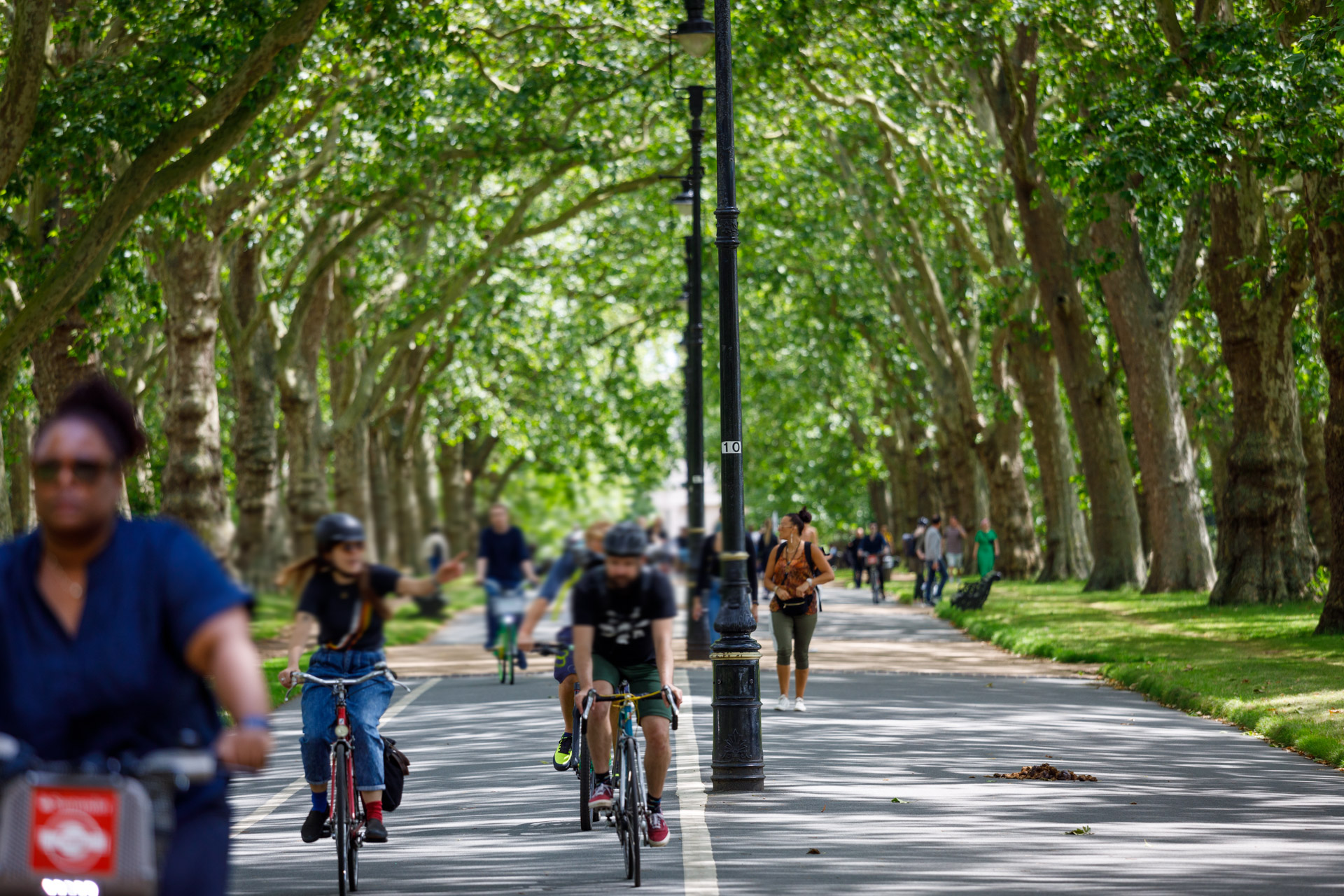
If you’re not a confident rider, you’ll want to find safe, pleasant routes for all the trips you make regularly. Ideally you want a route that’s not too hilly, and avoids mixing with motor traffic as much as possible. It’s worth taking some time to plan these out before you start.
1. Plan your journey
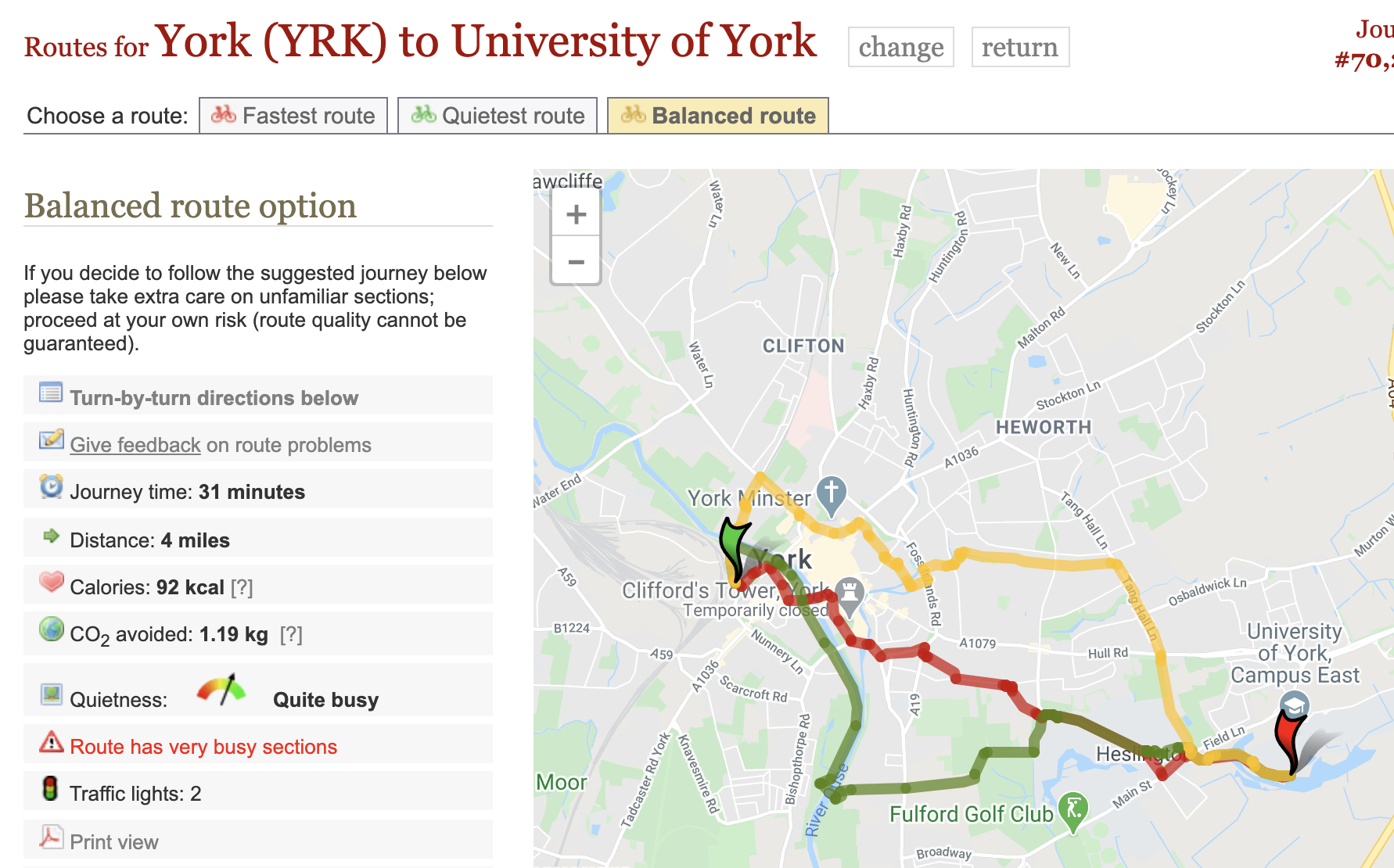
First, sit down and plan out a route. But don’t reach straight for Google Maps – their cycling directions aren’t great for avoiding busy roads. CycleStreets and Citymapper will calculate a quiet route for you, but take their directions with a pinch of salt. Citymapper only works in London, Manchester and Birmingham, and CycleStreets is slightly out of date in places.
If you’re cycling in London, Route Plan Roll gives you a Google Maps overlay showing where all the cycle paths are. It even rates each one with a helpful colour-coding system.
2. Do a trial run
Test out your route when the roads are quiet and you’re not in a rush. Early Sunday mornings are good. If you can, recruit a friend who’s a confident cyclist to ride it with you. Some councils will even send a qualified instructor to help you on your trial ride. They’ll help you negotiate any tricky parts, and might even have some tips on even quieter routes you could take.
3. Repeat and refine
As you get used to riding your regular journeys, make a note of the parts you don’t like. Then see if you can adjust the route to avoid them. Over time you’ll be able to perfect it – or even have a few good options for the same journey, to keep things interesting.
And remember, there’s nothing wrong with getting off and walking a section that doesn’t feel good to ride.
What to wear for cycling
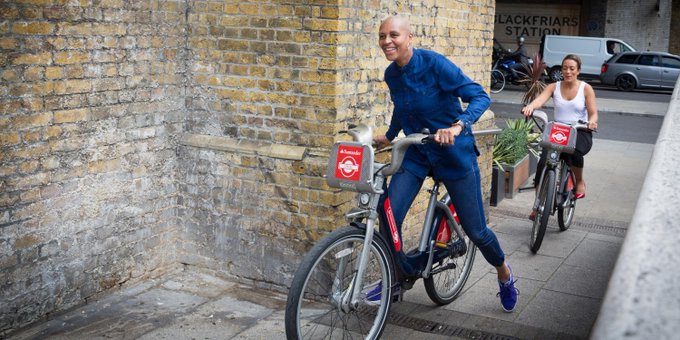
For everyday cycling, the aim is to set up your bike to fit around your life, rather than the other way around. If you do this right, you shouldn’t need much special clothing or equipment. Just wear your everyday clothes, or if you prefer, the stuff you’d normally wear to exercise in.
That said, it’s good to have gloves for cold days. There’ll be wind blowing over your hands and you won’t be able to warm them up in your coat pockets!
Layers are also a good idea. Even when you’re riding at a leisurely pace, you’ll heat up slightly more than you would on foot. So it’s useful to be able to pull over and quickly whip off a layer so you can stay comfortable.
How to lock your bike safely
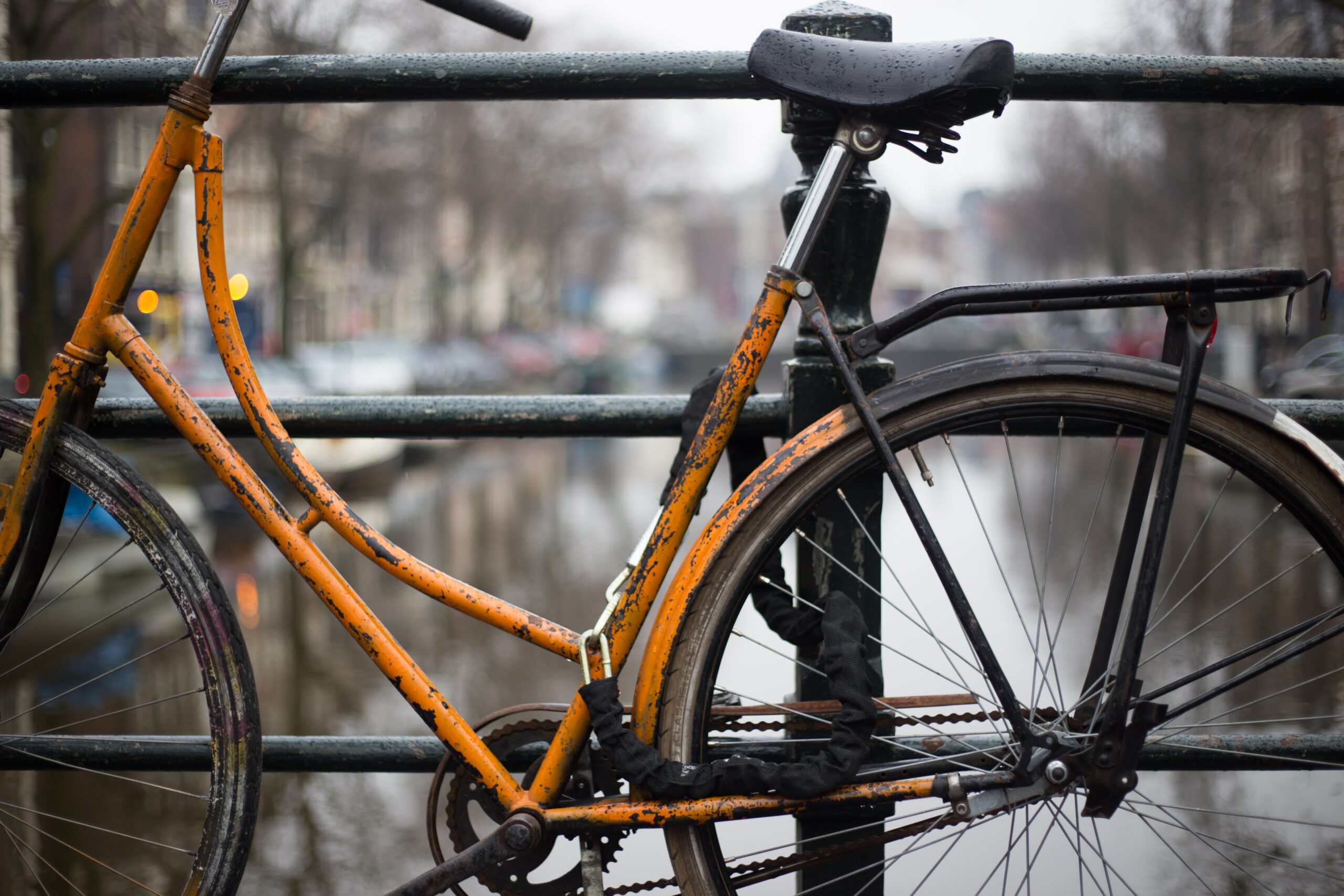
Sadly, you can never make your bike impossible to steal when it’s out on the street. Thieves can get through any lock, given enough time and the right tools. So if you can keep your bike indoors or in a shed or bike hangar, do. For the rest of the time, the aim is to strike a good balance between security and convenience, so you can deter thieves as much as possible without making it a complete hassle to use your bike.
Lock your bike through the frame, to a solid object. Don’t just lock it through the wheels. Avoid low poles where a thief could lift your bike over the top.
Before you lock to a bike stand or railing, check it over and give it a shake to make sure it’s solid, and hasn’t already been cut or detached.
In more theft-prone places, you’ll also want to secure your wheels. I use Pinheads locking bolts (that can’t be undone without a special tool) to minimise hassle, but you could also use a cable or a second lock.
If you want to insure your bike, make sure you keep the receipt for the bike itself, and the lock you use to secure it. It’s also useful to have a picture of yourself with the bike, ideally with the lock visibly attached.
How to cycle on the road with cars

Even on a well-planned riding route, you can’t always avoid mixing with motor traffic. Here’s what to do when that happens. Check out this guide for more on how to ride a bike in traffic.
Stay alert
Watch what’s happening around you, and anticipate where a dangerous situation might emerge. Is that car turning left? Is a pedestrian about to walk out from behind that stationary bus? Will that drain cover be slippery in this weather?
Whenever possible, stay clear of large trucks – especially if you think they might turn left. Badly designed truck cabs can make it hard for truck drivers to see cyclists on the roads.
Don’t ride in the gutter
Some nervous cyclists tend to ride close to the edge of the lane. This is understandable, but it’s actually safer to take a confident road position away from the curb. That way you’re more visible, and make it harder for drivers to overtake you unsafely.
This is even more important when you’re riding near parked cars, as people will occasionally open a car door in your path without looking. Make sure you keep plenty of space to avoid this.
Safety in numbers

If you’re feeling nervous, it’s good to bunch up with other riders going the same way. You’ll all be more visible to drivers, and if it looks like they’re riding safely, you can copy the other riders’ moves!
Use hand signals and check behind you
Behave predictably. Use big, clear hand signals to show when you’re about to turn, especially if you’re going to cross a lane of traffic.
Don’t forget to take a quick glance over your right shoulder before you make a move. It lets you see what’s happening behind you, and gives an extra signal to drivers that you’re about to do something.
At red lights
If you’re coming up to a red light and there’s already a queue of cars, you can join the back of the queue, or if there’s enough space you can ride up to the front and get a head start. If you do this, look out for cars that might be turning left, especially if you think the light is about to change.
Remember to shift down into a low gear before you stop, so it’s easy to move off again on the green light.
At junctions
On the approach to a junction, position yourself to prevent drivers from making a dangerous move. For example, if you’re going straight on, stick to the middle or right side of your lane, so a driver can’t overtake you and then turn left across your path.
This is also worth doing if you’re on a main road and there’s a side road coming up on the left.
If in doubt, walk it
There’s nothing wrong with skipping parts of your ride that don’t feel good. If you’re approaching a tricky stretch of road and feel unsure, pull over and watch for a minute. See what the cars are doing, and watch how other cyclists move through it.
If you’re still not comfortable, you can always get off and wheel your bike until you get to a safer section.
Final words
If you’re still reading, chances are you’re serious about starting out as a cyclist. Congratulations!
Like anything new, it’ll take a while to get used to it and fine-tune your routine. But you can do this. Just take it at your own pace, and don’t be afraid to ask for help. You might be feeling nervous, or daunted by all the new things to learn. But hopefully you’re feeling excited too – you should be! You’re about to open up a whole new side to your city.
Research shows that people who cycle regularly are happier and healthier. But no study can capture the feeling of zipping through a place you know and love, with the sun on your face and the wind in your hair. That’s something you have to experience for yourself, and I can’t wait for you to try it.

Change the world with us
Together we can take on the world's worst polluters and solve its biggest problems. See how you can get involved.
Header image © Crispin Hughes | crispinhughes.co.uk
